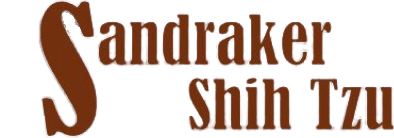The Shih Tzu
It is believed that the Shih Tzu’s ancestry goes back to the temple dogs of Tibet which had been bred in that country for over 2,000 years. The rulers of Tibet and China presented these dogs as gifts to Chinese royalty. Once in China, Lhasa-like dogs were crossed with Pekingese to produce the Shih Tzu, meaning “lion dog” in Chinese. The breed was imported into Great Britain in the late 1920’s or early 1930’s and brought into the United States in the late 1950’s
Breed Profile:
The Shih Tzu has always been bred as a companion dog. He is a sturdy, lively, toy dog with long flowing double coat with a soft undercoat that requires daily brushing. He is always alert and carries himself with an air of arrogance and self-importance with a warm, sweet, wide-eyed, friendly and trusting expression. His personality is outgoing, friendly, affectionate, intelligent, and docile. Although there has always been considerable size variation, the Shih Tzu must be compact, solid, carrying good weight and substance. The Shih Tzu thrives on human companionship, both adult and child, and needs a good deal of attention. In return, he is completely devoted to his family.
A Special Note About “Imperial” or “Tiny Teacup” Shih Tzu:
The “Imperial” or “Tiny Teacup” are names that have been used to describe an undersized Shih Tzu. These are not exotic or rare varieties of the Shih Tzu. While all breeders may occasionally have an unusually small Shih Tzu, a reputable and responsible breeder does not breed specifically for this trait. For additional information on this subject, please see: The Myth about Imperial or Tiny Teacup Shih Tzu from the American Shih Tzu Club.
